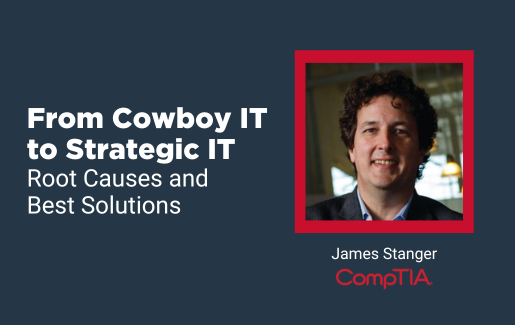 This article is part of an IT Career News series called Your Next Move. These articles take an inside look at the roles related to CompTIA certifications. Each article will include the responsibilities, qualifications, related job titles and salary range for the role. As you consider the next move in your IT career, check back with CompTIA to learn more about your job prospects and how to get there.
This article is part of an IT Career News series called Your Next Move. These articles take an inside look at the roles related to CompTIA certifications. Each article will include the responsibilities, qualifications, related job titles and salary range for the role. As you consider the next move in your IT career, check back with CompTIA to learn more about your job prospects and how to get there.
Businesses rely on technology for everyday tasks. As organizations increasingly depend on IT systems to conduct daily activities, hackers are just as quickly trying to exploit the gaps. Effective IT leadership recognize the need to safeguard data and protect systems to keep businesses functioning efficiently. IT leaders are needed to define and integrate necessary protections on critical systems and educate users on safe technology practices. If you have an interest in executive leadership, securing IT systems and enabling better business operations, along with a background in cybersecurity, you might be a good fit for chief information security officer (CISO).
What Is a Chief Information Security Officer?
The chief information security officer, or CISO, is the executive responsible for an organization’s data and cybersecurity needs. Historically, CISOs have reported into the chief information officer (CIO), but the tide is changing. As cybersecurity becomes more critical to business operations, some CISOs now report into the risk officer, audit committee, general counsel or even directly to the CEO. When there is both a chief information security officer and a chief security officer (CSO), the CISO handles the security of tech systems while the CSO is responsible for physical security, ensuring employees are safe and buildings are secure.
Chief information security officers need to have a firm understanding of IT infrastructure and grasp the myriad potential threats to tech systems. Implementing secure protocols, procedures and recovery processes is the primary responsibility of the CISO.
CISOs also need to be able to communicate effectively with IT teams and design sophisticated plans to execute needed cybersecurity practices. This executive must also comprehend how tech systems impact business operations and be able to efficiently manage security incidents.
A chief information security officer is expected to develop the processes and plans that are needed to protect critical systems and safeguard data. These leaders should have a wide-ranging knowledge of IT infrastructure and cybersecurity procedures and practices to help enable secure operations. Effective CISOs lead a team of cybersecurity professionals to implement safe data practices and safeguard business functions.
Other duties of a CISO include the following:
- Help design and implement secure processes and systems
- Drive and oversee cybersecurity initiatives
- Develop disaster recovery protocols and implement plans for business continuity
- Implement secure data management strategies and processes
- Supervise and implement safe practices for user access and permissions
- Ensure systems maintenance and application updates take place
- Manage breaches quickly
- Ensure compliance regulations are being met
- Develop and support effective communication with users to limit security vulnerabilities
How To Become a Chief Information Security Officer
IT professionals who are seeking to become a chief information security officer typically need ample cybersecurity experience and know how to efficiently manage a security team and security incidents.
The CISO position is designed for seasoned cybersecurity professionals who have worked their way up from entry-level security positions, like security administrator, to intermediate roles, such as cybersecurity analyst and now lead the cybersecurity team. Ideally, a CISO possesses both strong technical and leadership skills.
A CISO candidate should hold a bachelor’s degree in an IT-focused or related business field. Often, CISOs are required to hold a master’s level degree in cybersecurity or similar area.
The CompTIA Advanced Security Practitioner (CASP+) is ideally suited for IT professionals with 5 to 10 years of hands-on cybersecurity experience who want to actively participate in advanced cybersecurity activities. CASP+ helps CISOs stay on top of their hands-on security engineering skills and validates their ability serve as a cybersecurity team lead.
The Details
Chief Information Security Officer Salary Range
The median annual wage was $179,520 for chief executives as of May 2021 (U.S. Bureau of Labor Statistics (BLS)).
Chief Information Security Officer Job Outlook
From 2019 to 2029, the BLS projects a decline of 7% for all chief executives, but an increase of 6% for top executives. As security continues to be more critical to business operations, it is safe to say the job outlook for chief information security officers will increase.
Job Titles Related to Chief Information Security Officer
- Chief information officer
- Security operations center (SOC) analyst
- Security architect
Will your next move be chief information security officer? If so, check out CASP+ to get the skills to get you there.




0